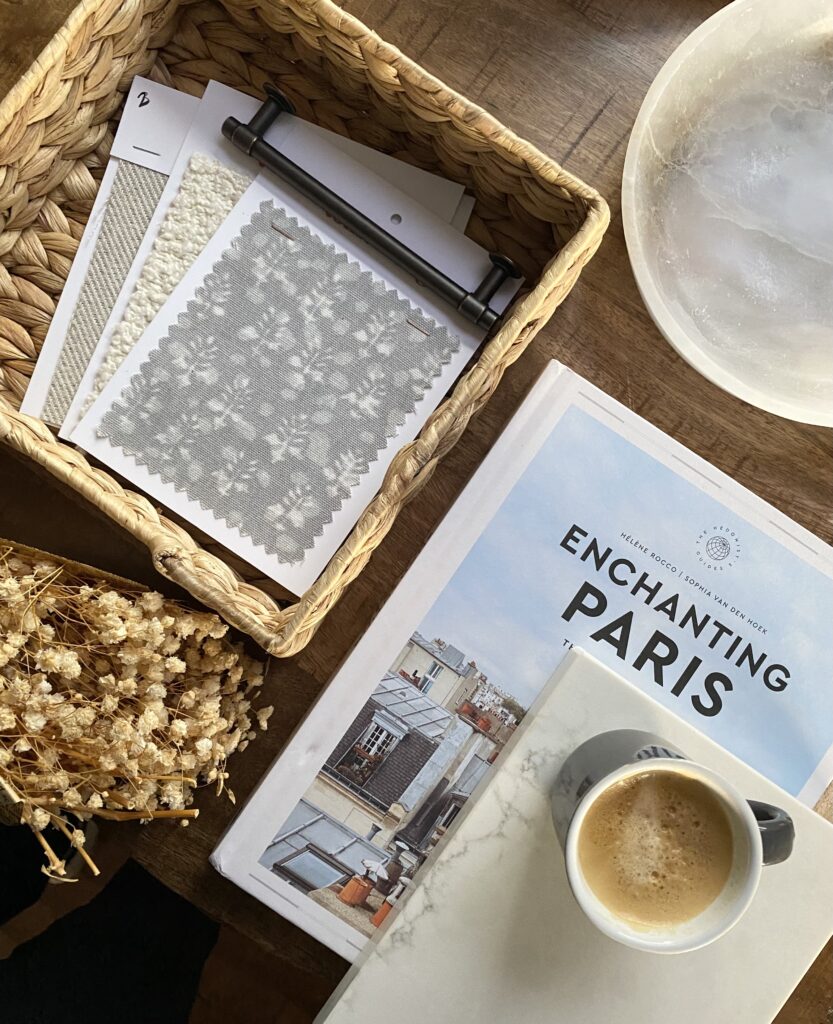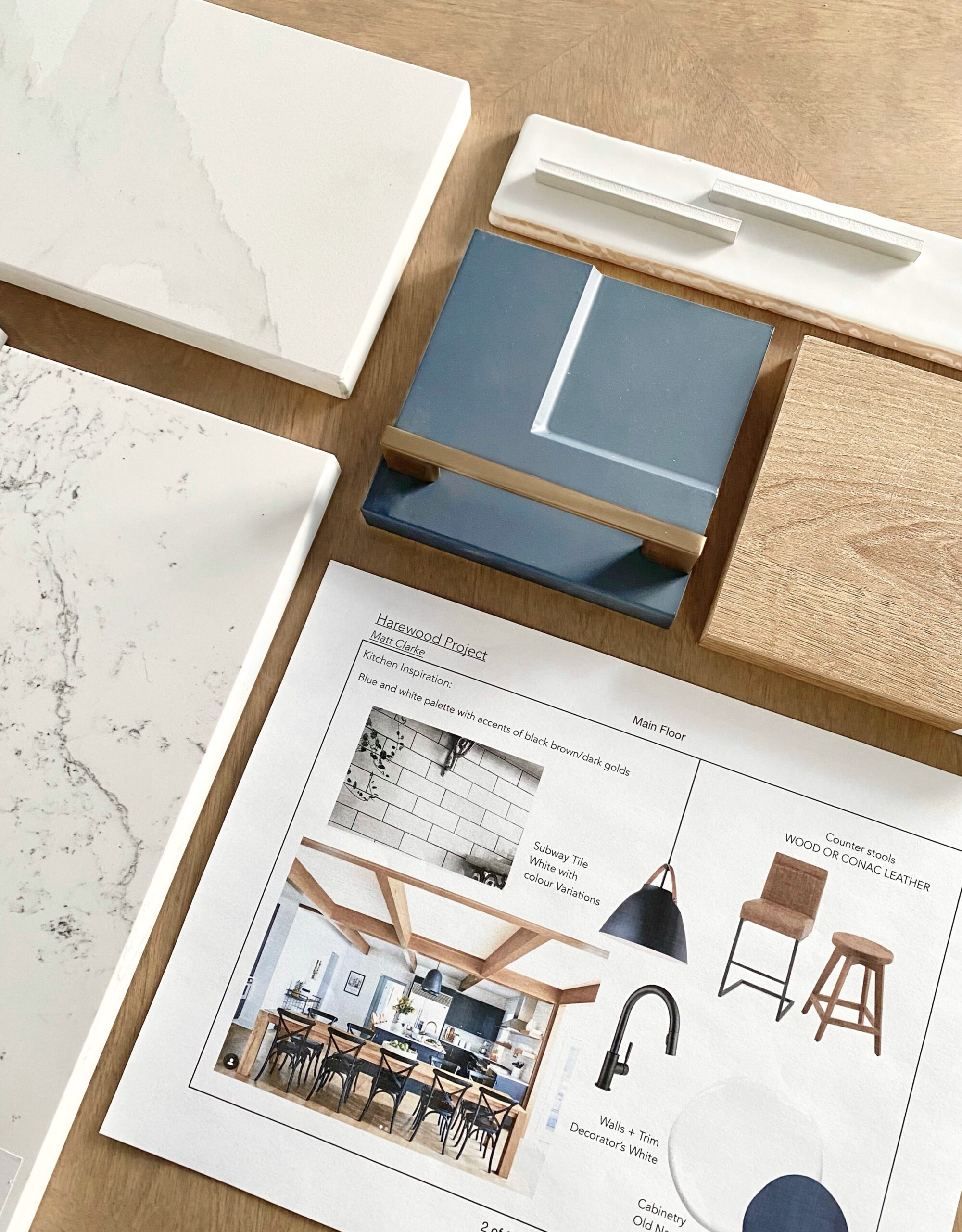“The key to a successful initial design concept is the level of clarity expressed during the consultation and the decisiveness post presentation. As a client, do your homework before the consult, get clear on your vision and then do yourself a favour and stop looking for ideas.”
If you are someone looking to start the interior design process, this post is for you.
First let’s dive into how our design process works so you can better understand how a designer will be able to nail down the vision you have for your renovation or decorating project.
Let’s Get To Know Each Other
The very first step of our process includes taking time to get to know our potential clients through a discovery call, survey and an in-home consultation. This first step allows us to understand the broad scope of your project and see if we will be a good fit while also allowing us to prepare for the consultation.
During the next phases, we are able to really get to know you and dive into the nitty gritty details of the job – the wants, the needs, and the must haves! It also allows us to walk the space, take photographs and see problem areas in person. If we are provided with enough info during the discovery call, we may also bring samples or some ideas with us to show a client during the consultation.
Get Inspired!
The better prepared a client is for the consultation, the more useful our time will be together. We always encourage our potential clients to do some homework before we meet – look online for pictures that speak to you so we can discuss them – you may not see a style or recurring theme, but we can help you puzzle that out.
Think about the colours and materials you love or, just as good, the ones you can’t stand! This really helps set the design team on the path to success and likely set you up for less future revisions.
Check out our Instagram for Design Inspiration.
Stop Looking
The key to a successful initial design concept is the level of clarity a client has when discussing their wants and needs, as well as their likes and dislikes during their consultation phase. It also comes down to decisiveness – there are millions of beautiful spaces to influence us a click or two away, which is amazingly inspiring, but there comes a point where it is good to stop looking because the endless beautiful options can muddy up one’s own vision with what-ifs and never-ending changes.
“The key to a successful initial design concept is the level of clarity expressed during the consultation and the decisiveness post presentation. As a client, do your homework before the consult, get clear on your vision and then do yourself a favour and stop looking for ideas.”
The Designing Begins
Post consult, the design team will review their notes and get started on the brainstorming, drawings and sourcing of materials for the job based on all of the info the client provided. That was important – so let’s say it again – our ideas are based off the info the client provides.
If you are clear in communicating your needs and your budget, there should be no reason your first concept is not very close to being a home run. Having said that, your design team always expects there to be some changes to make it just right. So here we are at last – what is a revision? What makes a revision major vs. minor?
Minor Design Revisions:
A minor revision is the slight adjustment of a concept, think colour tone, the reconfiguration of a couple cabinets or a new light fixture option – basically think of it as anything that makes up less than 20% of your overall concept. If we are dealing with a multi-room design, we also encourage our clients to think about each space and make a list so that we can tackle the revisions in one or two rounds. Again decisiveness is key; getting back to your design team with revisions quickly ensures your project stays fresh in everyone’s mind and keeps your project’s timeline in check.
Major Design Revisions:
Although it might be clear, let’s touch on what constitutes a major revision. A major revision is anything that really goes from tweaking a concept to a full redesign. Let’s say we had an engineer do drawings for an open concept. Now you want to scrap that and open up other load-bearing walls, well we will need the engineer to do a second site visit and provide a second set of engineered drawings, which will add additional fees. After this, the design team will need to reconsider all other aspects to make this new space work. Let’s consider another example – a client said they loved green and blue, but now want all creams, terracotta and wood tones. In this case we really need to rethink every suggestion we made and start fresh. It can not be expected that we will spend an additional week (or six) sourcing, budgeting and drawing up plans because the client wants to see a completely different idea the the original one that was communicated at the expense of the design team.
What do you do if you are a client who needs to see a lot of options or multiple concepts?
Great! We love creating designs. However, a flat rate design package is not the right fit for you unless you want to make it clear you need 2 concepts, and then we will tailor your flat fee to include the time required to craft two different designs. Otherwise, an hourly fee is your best friend and we will gladly try every idea under the sun. However, don’t be surprised if the timeline for your project extends longer than you expected, as do your design fees – I’ve said it before, and I’ll say it one more time: decisiveness is your key to success (and lower fees).
I will also mention that some clients get tripped up on the idea that we will develop one concept and present it. This is not to say that we only explore one concept; it’s quite the contrary; we run through multiple configurations and several material selections to create a beautiful, cohesive and highly functional concept that speaks to the ideas expressed to us during those initial meetings. So a lot of the “what-ifs” you may think of we have already tried and found them to be less successful than the one presented and are happy to discuss why if asked.
It’s not always easy to tell the exact extent of changes and calculating the percentage of changes is always nuanced. For that reason, there will be situations when we will be flexible and reach a compromise with our client to keep a good relationship.

To simplify, let’s break it down like this:
Minor Revisions are defined as:
- adjustment of colours which do not affect the cohesiveness of all design choices
- Specific Decor/material selections that impact less than 20% of the total design
- Partial design element – affecting less than 20% of a layout or floor plan
Major Revisions are defined as:
- Changing the design partially, such as adding new elements or changing them completely making up more than 20% of the design
- Completely changing a design from an original consult discussion (totally new direction or list of new wants/needs)
– Changing a design direction completely
Which Package is right for your needs:
At STILE, our Standard Flat Fee Design Packages include:
- 1 fully developed concept
- 2 rounds of minor revisions
At STILE, our Standard Hourly Design Rate includes:
- 1 fully developed concept (unless multiple are requested prior to contract) charged at the standard hourly rate of the STILE Designer while crafting the concept and sourcing materials
- Unlimited revisions are charged at the standard hourly rate of the STILE Designer
Still not sure what package is right for you? Drop us a line via email or go old school and give us a ring – we’re always happy to talk process and design.
